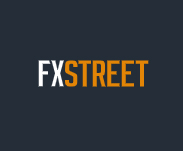USD/CHF extends its decline near 0.8800, US June PCE data looms


- USD/CHF trades in negative territory for the third consecutive day in Friday’s early European session.
- The US GDP growth number came in stronger than expected, growing 2.8% in Q2 vs. 1.4% in Q1.
- The tech-led global stock market sell-off and Chinese economic slowdown concerns boost the Swiss Franc.
- Investors await the US June PCE data, which is due on Friday.
The USD/CHF pair remains under selling pressure around 0.8810 during the early European session on Friday. The Greenback edges lower despite stronger-than-expected US economy data on Thursday. The tech-led global stock market sell-off has fueled a flight to safety, benefiting the safe-haven currencies like the Swiss Franc (CHF).
The US economy grew faster than expected in the second quarter (Q2), with the real GDP expanding at an annualized quarterly pace of 2.8% versus 1.4% in Q1. Nonetheless, the expectations of a September interest rate cut from the Federal Reserve (Fed) remain intact. Financial markets are pricing in a nearly 93% chance that the US Fed will leave its benchmark interest rate unchanged at its upcoming July meeting next week and is likely to cut the rate in September, according to the CME FedWatch Tool. This, in turn, might cap the upside for the US Dollar (USD) in the near term.
The negative sentiment in global stock markets, led by US technology stocks and the fears of a Chinese economic slowdown contribute to the downside of the USD for the time being. On Thursday, the People’s Bank of China (PBOC) cut the one-year Medium-term Lending Facility (MLF) rate from 2.50% to 2.30%, raising concerns about the sluggish Chinese economy.
The release of the US Personal Consumption Expenditures (PCE) - Price Index for June will be the highlight on Friday. The headline PCE is estimated to show an increase of 0.1% MoM in June, while the Fed’s preferred measure of inflation, the Core PCE, is projected to drop to 2.5% YoY in June from 2.6% in May. The softer US PCE inflation reports might pave the way for the Fed rate cut in September and exert some selling pressure on the Greenback. On the other hand, the hotter-than-expected inflation readings might trim some rate cut expectations in September, which provides some support to the USD.
Swiss Franc FAQs
What key factors drive the Swiss Franc?
The Swiss Franc (CHF) is Switzerland’s official currency. It is among the top ten most traded currencies globally, reaching volumes that well exceed the size of the Swiss economy. Its value is determined by the broad market sentiment, the country’s economic health or action taken by the Swiss National Bank (SNB), among other factors. Between 2011 and 2015, the Swiss Franc was pegged to the Euro (EUR). The peg was abruptly removed, resulting in a more than 20% increase in the Franc’s value, causing a turmoil in markets. Even though the peg isn’t in force anymore, CHF fortunes tend to be highly correlated with the Euro ones due to the high dependency of the Swiss economy on the neighboring Eurozone.
Why is the Swiss Franc considered a safe-haven currency?
The Swiss Franc (CHF) is considered a safe-haven asset, or a currency that investors tend to buy in times of market stress. This is due to the perceived status of Switzerland in the world: a stable economy, a strong export sector, big central bank reserves or a longstanding political stance towards neutrality in global conflicts make the country’s currency a good choice for investors fleeing from risks. Turbulent times are likely to strengthen CHF value against other currencies that are seen as more risky to invest in.
How do decisions of the Swiss National Bank impact the Swiss Franc?
The Swiss National Bank (SNB) meets four times a year – once every quarter, less than other major central banks – to decide on monetary policy. The bank aims for an annual inflation rate of less than 2%. When inflation is above target or forecasted to be above target in the foreseeable future, the bank will attempt to tame price growth by raising its policy rate. Higher interest rates are generally positive for the Swiss Franc (CHF) as they lead to higher yields, making the country a more attractive place for investors. On the contrary, lower interest rates tend to weaken CHF.
How does economic data influence the value of the Swiss Franc?
Macroeconomic data releases in Switzerland are key to assessing the state of the economy and can impact the Swiss Franc’s (CHF) valuation. The Swiss economy is broadly stable, but any sudden change in economic growth, inflation, current account or the central bank’s currency reserves have the potential to trigger moves in CHF. Generally, high economic growth, low unemployment and high confidence are good for CHF. Conversely, if economic data points to weakening momentum, CHF is likely to depreciate.
How does the Eurozone monetary policy affect the Swiss Franc?
As a small and open economy, Switzerland is heavily dependent on the health of the neighboring Eurozone economies. The broader European Union is Switzerland’s main economic partner and a key political ally, so macroeconomic and monetary policy stability in the Eurozone is essential for Switzerland and, thus, for the Swiss Franc (CHF). With such dependency, some models suggest that the correlation between the fortunes of the Euro (EUR) and the CHF is more than 90%, or close to perfect.

.jpg)



.jpg)